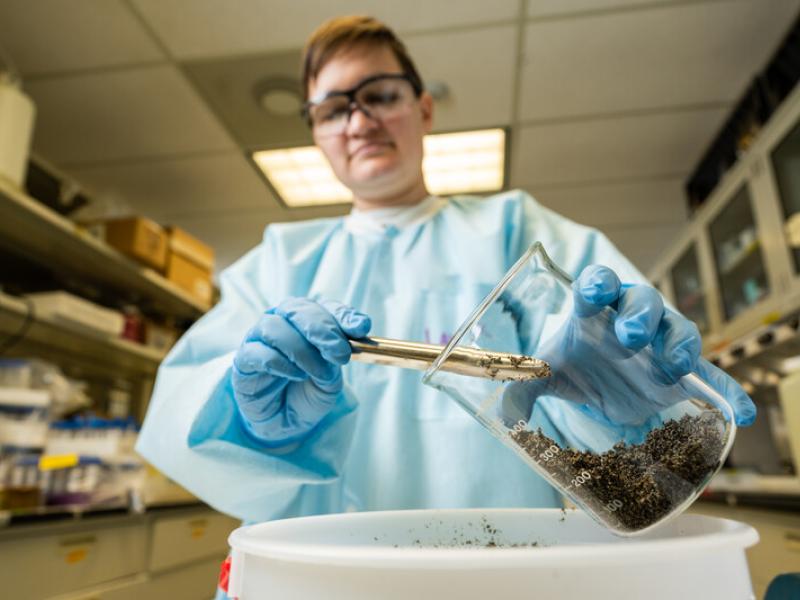Environmental
Remediation
Environmental
Remediation
Advancing Hanford soil
and groundwater cleanup
with technical solutions
Advancing Hanford soil
and groundwater cleanup
with technical solutions
PNNL researchers developed time-lapse Electrical Resistivity Tomography (ERT) to monitor groundwater remediation performance in the 300 Area of the Hanford Site. ERT technology allows PNNL researchers and members of the project team to monitor the subsurface migration of an injected phosphate amendment in real time. In collaboration with Hanford Site contractor CHPRC, the team is now injecting a phosphate chemical solution to enhance remediation of groundwater and soil contaminated with uranium. PNNL’s ERT monitoring capability is instrumental in evaluating the performance of Hanford remediation activities such as this.
Andrea Starr | Pacific Northwest National Laboratory
PNNL has been providing technical solutions for more than 50 years to help address one of the nation's most complicated environmental situations: the safe cleanup of legacy waste resulting from nuclear weapons development and nuclear energy research.
By integrating scientific understanding with applied engineering, PNNL helps develop and implement technologies that protect people and the environment from the risks of contamination. Our core environmental remediation competencies—in the nature and extent of contamination, remedial design, remedial systems engineering, and end states—provide an understanding of how contaminants will behave in the environment.
Multidisciplinary science and engineering
PNNL’s science-based and risk-informed solutions offer the technical defensibility and objectivity in the management of DOE's nuclear legacy. Our diverse expertise includes subsurface science, the deep vadose zone, nuclear chemistry, earth systems science, environmental engineering, risk and decision science, imaging and modeling, characterizing contaminants, assessing contaminant transport, and ecological restoration.
As an enduring research partner, PNNL’s depth of scientific and technical expertise remains crucial to Hanford cleanup and supports similar work at other contaminated DOE sites.





